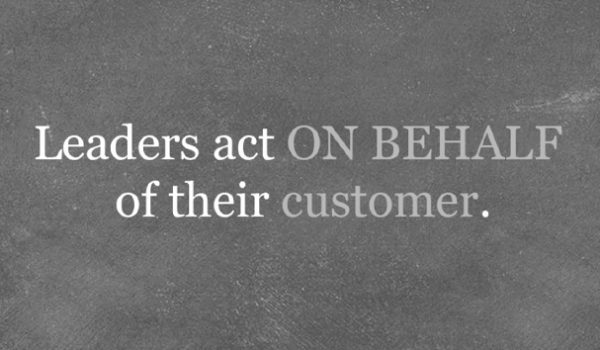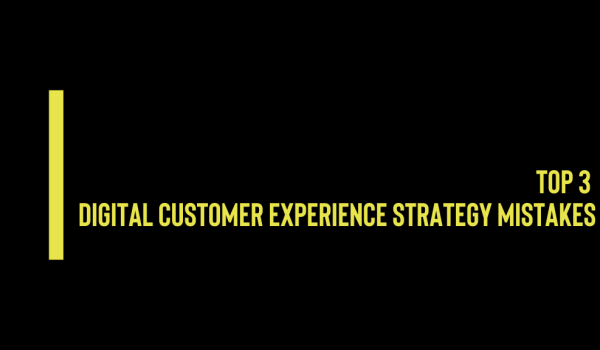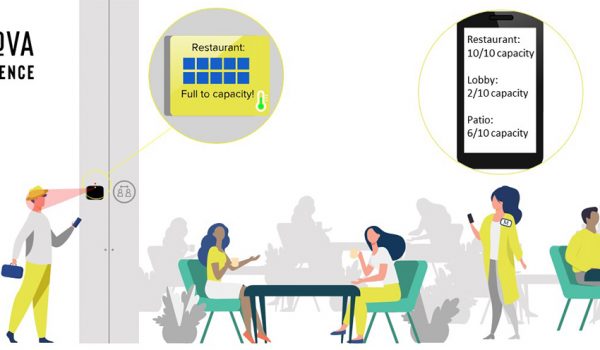
How to Get Enough Funding for CX Initiatives
Delivering impactful customer experience programming starts with making the business case for customer experience to executive leadership. This is a straightforward objective. However, it requires strategy, clarity, education, and communication to accomplish successfully.
It sounds like a lot, doesn’t it? The main driver for all this work is the C-Suite often believes their organization has a lock on customer experience. Even if their customers do not feel the same way. The perception gap is real. Bain research shows that 80% of CEOs believe their organization delivers a “superior experience.” But only 8% of those organizations have customers who agree that they deliver “superior experience.”
You can’t understate the business impact of that difference. It causes inaction and inertia that lead to lost customers and revenue. Certainly, this statistic gives us plenty to talk about in terms of getting to the Voice of the Customer to the Executive Meetings. It also compels us to look at how to get leadership to fund the customer experience initiatives that take that Voice of the Customer into account and deliver real impact.
Prioritization
Think about it. If your CEO is so convinced your customers are already enjoying superior experience, what impetus does s/he have to invest in improving it? Why should s/he invest in new initiatives and an expensive CX program that will also require funding for IT tools and/or hospitality trainings?
The first step is to educate Executive Leadership on the reality of your customer experience. Do this succinctly, in a way that is immediately understandable and relevant to their goals. Outline CX wins, losses, and gaps. Introduce real customer data and competitive analysis. In short, do your research, bring your research, and gist your findings to connect them to your proposed program and funding request.
Make the pain clear for the executive team. And make it just as clear how you aim to resolve that pain, with appropriate funding and execution. Prioritize your program. Then sell the C-Suite on customer experience as a priority not just in your world, but in theirs.
Funding Failures Equal CX Program Failures
The 2023 US Customer Experience Index by Forrester shows the quality of CX has fallen for the first time since 2017. Further, it predicts 1 out of 5 CX programs will fail, and 80% of companies that do not prioritize CX as intrinsic to brand identity will demand CX leaders present real numbers to justify CX action or face dissolution of their department. Making the business case for CX and getting sufficient funding for success is more important than ever. And more difficult.
Many leaders make the mistake of not asking for enough funding. Especially when it comes to the technical elements of CX programs. Underfunded programs are actually worse than non-existent programs. They end up being perceived as a waste of time and money. Which is kind of true. In making the business case for your customer experience programs, make sure you own the long-term view. The benefits of CX programs come in their third year. That means you are essentially asking for a 3-5 year investment when funding CX initiatives. Of course it will be expensive! While you are at it, don’t forget to communicate the risk of not investing intelligently in CX.
This happens for a variety of reasons. But it centers around the quality of information the customer experience leader delivers and the way they communicate that information to the executive team. Depth of understanding and information sharing is particularly important for funding customer experience technology programs. What makes it so difficult to sell customer experience technology programs internally? It starts with what the C-Suite knows – and does not know – about the their own tech stack. Low digital IQ among leaders, as well as confusion over the functions of IT roles, make leaders simplify the complexity of technology programs and assume more of the IT foundation is in place and paid for (because that suits them).
Challenges increase when you look at the real costs of design, development, testing and implementation of CX programs. Like we mentioned earlier, we are talking about funding a CX initiative that will last for years. An accurate timeline for program completion has many organizational dependencies. Customer experience leaders cannot take for granted the idea that the C-Suite who approves budget understands all pieces of the puzzle. You need to communicate and map the risks and the level of executive focus and support needed to derive meaningful ROI from the funds given to the CX initiative.
Support (financial and otherwise) is only possible with a real understanding of what your teams are aiming to do, how they will do it, and what impact if will have on your customers. In the IT example, budget approvers need to understand the use cases and the benefits to the customer. Across the organization, it also means continuing to sell the idea internally that better customer experiences deliver on brand promises, which contributes to the overall growth of the organization.
How to Fund Successful CX Programs
Funding successful CX programs comes down to making the business case for customer experience. And making that business case is often a more challenging task than new-to-role CX leaders assume out of the gate. Making the business case for customer experience starts with having the right internal conversations and making sure you report to the CEO or another C-suite member with significant power. Those conversations must be comprehensive and targeted enough to ultimately compel leaders to move money out of one department into yours to test the CX concept.
It also means having those conversations at the right time, and with more frequency than you think. Remember, you are building a path to yes as you are making your case. That requires connecting with the right people. It involves getting the ear of more leaders from across more departments than the average customer experience leader initially assumes.
To properly fund your CX initiative, you must also ensure you acquire and maintain the human resources necessary to make your customer experience vision a reality. The fastest path to achieve that it to poach the A-Players from other groups. Brand the CX initiative as the most innovative and promising initiative, and they will come on their own.
Understand the Internal Dynamics of Your Organization and Provide Solutions
Understanding the internal dynamics of your organization means being willing and able to have difficult conversations in support of advancing customer experience objectives and securing CX funding. Because you represent customer needs, wants, and painpoints, as a CX leader, you are uniquely positioned to spot the internal fractures that lead to broken customer experience. Prepare to not be the most liked leader in the next few years.
Use this knowledge to design and implement a CX transformation. Just make sure it is approved by the CEO and the Board. One leader I know got burned by skipping this step. At the end the incumbent leader won the political battle and the CX initiative failed at the start. As customer experience leaders, we often see fractures in employee experience and in HR departments, related to compensation or missed opportunities to hire based on culture. If you see something similar, take the time to map for the executive leadership what causes such fractures in the customer experience. Did a recent merger result in mission drift, or redundant, disjointed processes and procedures?
But don’t stop there. Take the next step and show how your initiative can remedy broken employee and customer experiences in service of a shared organizational commitment to customer centricity and customer happiness.
Expand Communication Beyond the Board Room
This simple shift will improve your chances of obtaining funding for your customer experience initiatives. Further, it will help you and your teams, in addition to the C-Suite, understand how much more work you have ahead of you to prioritize your customer experience roadmap through the development and execution stages.
When I was in the shoes of a new-to-role CX leader at a Fortune 500 company, I used to think of the executive meeting as the “ink meeting.” If you do all the legwork correctly, that meeting is a formality. The final step.
The legwork – the difficult, time consuming, nuanced work – happens long before you get in that board room. The conversations that lead to approvals happened before you walk in the room. In those conversations you have shown the viable business case and the real ROI of customer experience as it touches every level of your organization.
Back in the day, I witnessed peers present business cases to our executive committee having never pre-socialized them this way. They skipped the legwork. In those meetings, my peers found themselves scrambling to answer business and internal political questions they were unprepared to address. And that’s important to recognize. All those conversations you should be having leading up to the meeting are not only to educate your audience on the value of CX. They are also opportunities to educate you on the needs, painpoints, and objectives of your executive team. That is an opportunity you – and your initiatives – cannot afford to lose.
Think Wide
In your quest to obtain CX funding, remember the level of influence vice presidents and directors have on budget decision makers. Do not limit yourself by thinking you only need to sell customer experience to the executive leadership team. Remember, customer experience touches every layer of every department of your organization. By extension, you need those vice presidents and directors to become customer experience evangelists for funding and, later, for implementation.
In presenting your case, assess the benefits of every organizational stakeholder or group. If there are losers in the landscape who, by design, will hurt, you must acknowledge this reality publicly and frequently. Express gratitude for their sacrifice to the greater good.
Maintain Executive Support
Keeping executives’ focus on your CX initiative requires consistent, relevant communication across the C-Suite. Remember, a key piece of acquiring funding (and avoiding sticker shock when you get to your ask) is education. Education on the business case for specific customer experience initiatives and an actionable understanding of the ROI of customer experience takes time.
Start with a divide and conquer approach. Or better yet, a direct connect and persuade approach! Calendar some pre-briefings with individual executives before you meet with the entire executive team. This gives everyone a chance to ask and answer specific questions relative to their scope of needs, responsibilities, and goals.
When you are scheduling and planning for these conversations, be sure to include your Chief HR Executive. Buy-in from HR is almost as important as adequate funding for the success of a customer experience initiative. Time and again, we have seen that HR engagement is a key driver of positive customer and employee experience outcomes.
You never know who might help (or block) your business case. If you are asking for millions of dollars to build CX expertise in the enterprise, or to finally connect underlying systems that yield bad customer experience, you might find the Chief HR executive is so passionate about customer experience that he/she is the loudest voice in the room.
Plan for Success
At the top of this article, we shared statistics about what happens when you fail to execute intelligently on customer experience initiatives. This is what happens when you succeed. CX Index reports customer-centric brands report profits 60% higher than brands who do not focus on CX.
As we have shown, that path to customer centricity is not easy, especially if you try to navigate is alone. We recently launched a partner program for new-to-role CX leaders to help provide the support you need to chart your course to CX success.
If you are looking for an ally to help guide those difficult conversations, get you in front of the right people at the right time, and make the business case for your customer experience, explore how we can work together.















































































